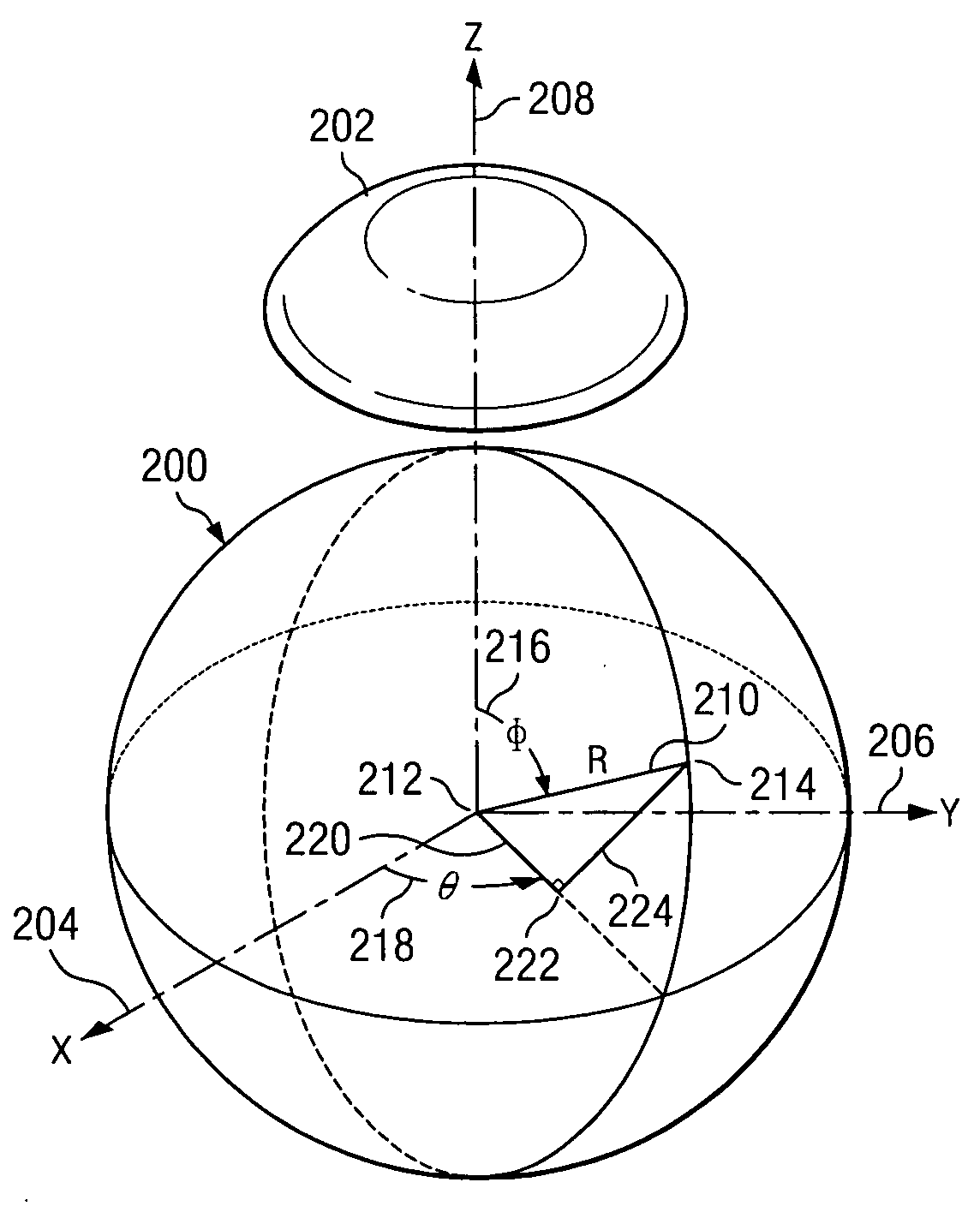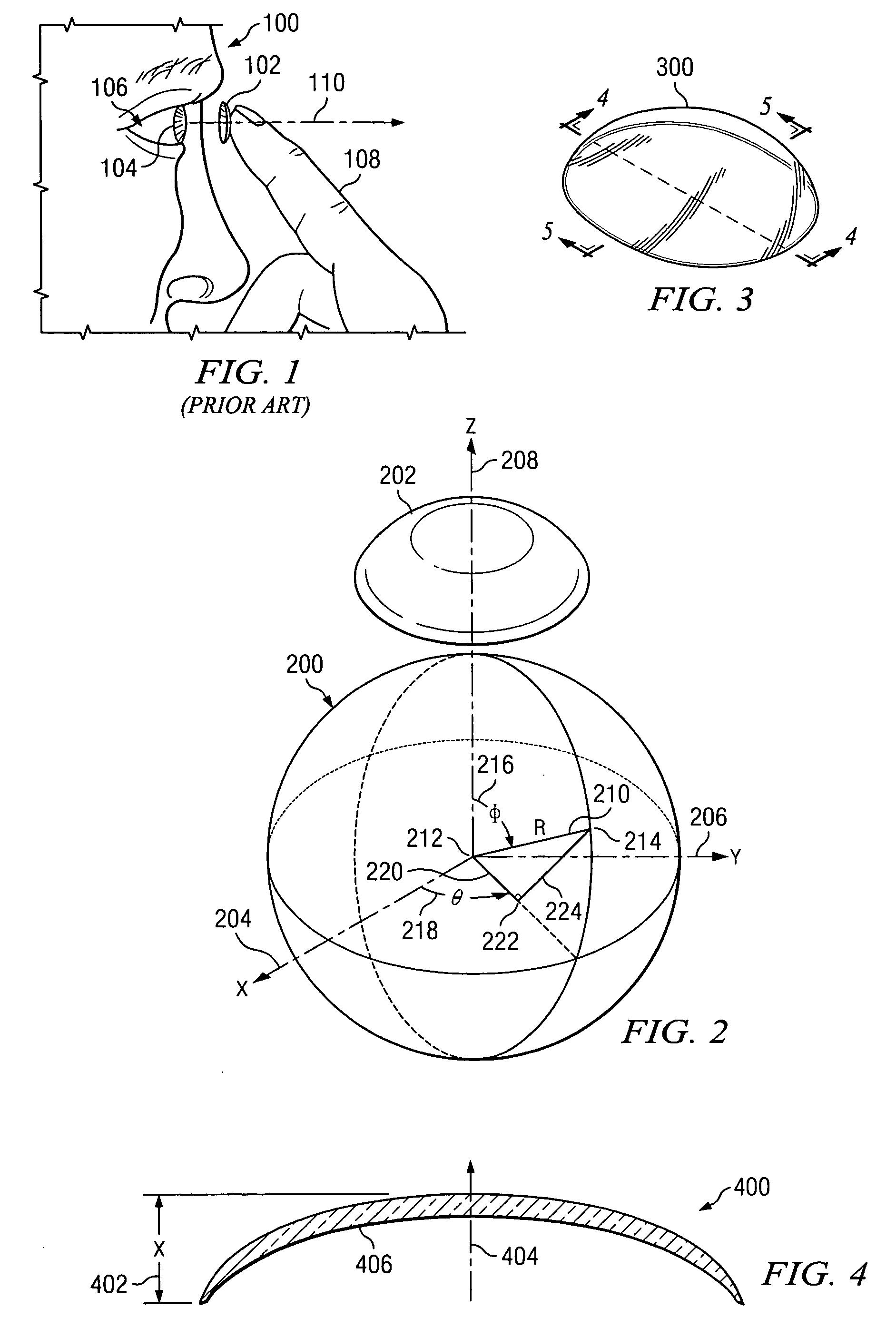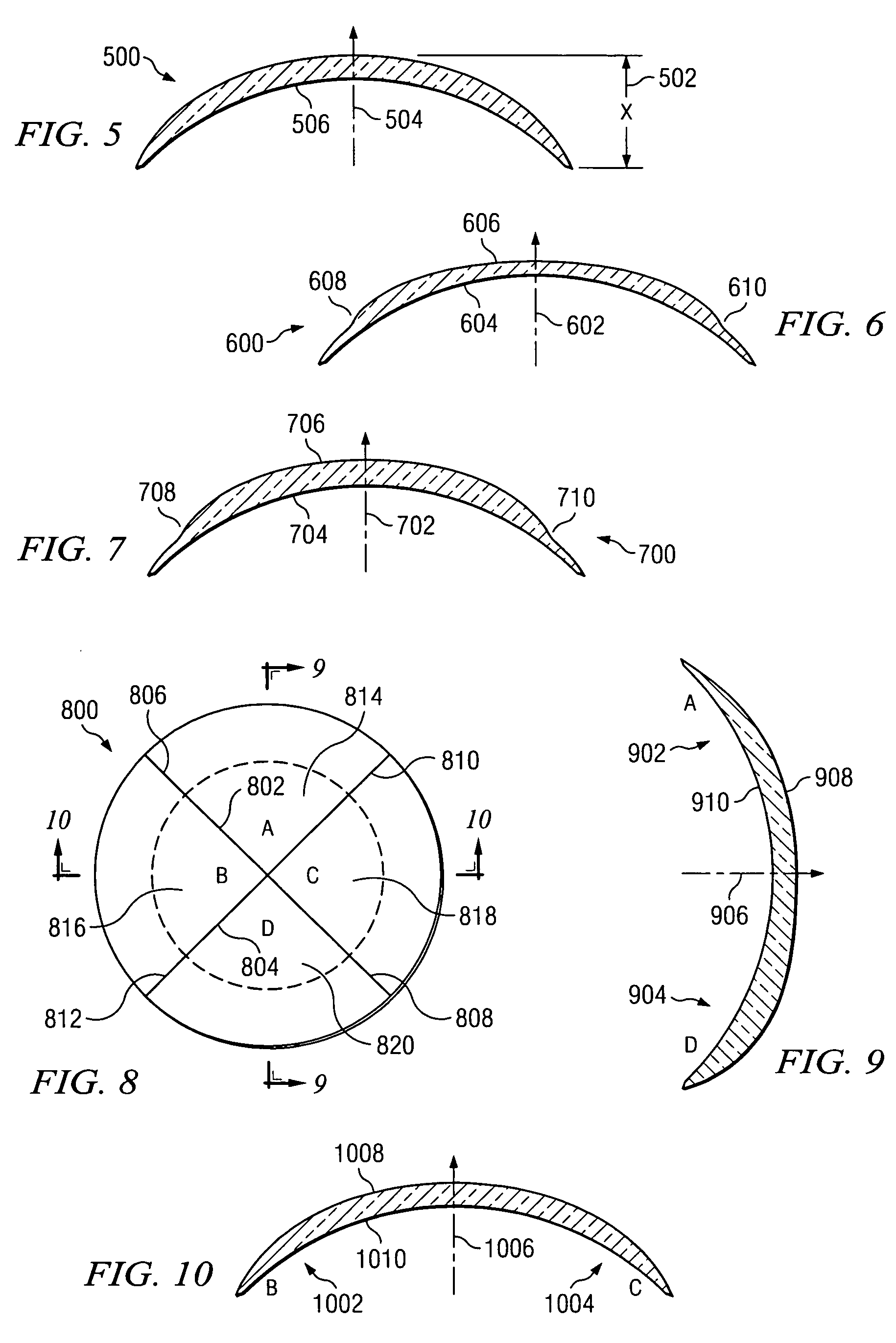Contact lens with controlled shape
a technology of contact lenses and shape, applied in the field of contact lenses, can solve the problems of discomfort in the eye, affecting the normal use of the eye, and affecting the effect of the eye position
- Summary
- Abstract
- Description
- Claims
- Application Information
AI Technical Summary
Problems solved by technology
Method used
Image
Examples
Embodiment Construction
[0023] With reference now to the figures and in particular with reference to FIG. 1, FIG. 1 shows a prior art method of a human 100 placing contact lens 102 on cornea 104 of eye 106, in accordance with an illustrative embodiment of the present invention. Contact lens 102 of the present invention may be placed onto cornea 104 of eye 106 by any convenient method, aside from using finger 108 as shown. The contact lenses of the present invention may also be sized and dimensioned for use on animal eyes, or may be sized and dimensioned as optical lenses on optical devices.
[0024]FIG. 2 shows a reference system 200 for describing the shape of contact lens 202, in accordance with an illustrative embodiment of the present invention. Contact lens 202 may correspond to contact lens 102. Reference system 200 includes X-axis 204, Y-axis 206, and Z-axis 208. Each axis is orthogonal (perpendicular) to the other, such that a ninety degree angle exists between each axis. Any two axes are in the same...
PUM
 Login to View More
Login to View More Abstract
Description
Claims
Application Information
 Login to View More
Login to View More - R&D
- Intellectual Property
- Life Sciences
- Materials
- Tech Scout
- Unparalleled Data Quality
- Higher Quality Content
- 60% Fewer Hallucinations
Browse by: Latest US Patents, China's latest patents, Technical Efficacy Thesaurus, Application Domain, Technology Topic, Popular Technical Reports.
© 2025 PatSnap. All rights reserved.Legal|Privacy policy|Modern Slavery Act Transparency Statement|Sitemap|About US| Contact US: help@patsnap.com



